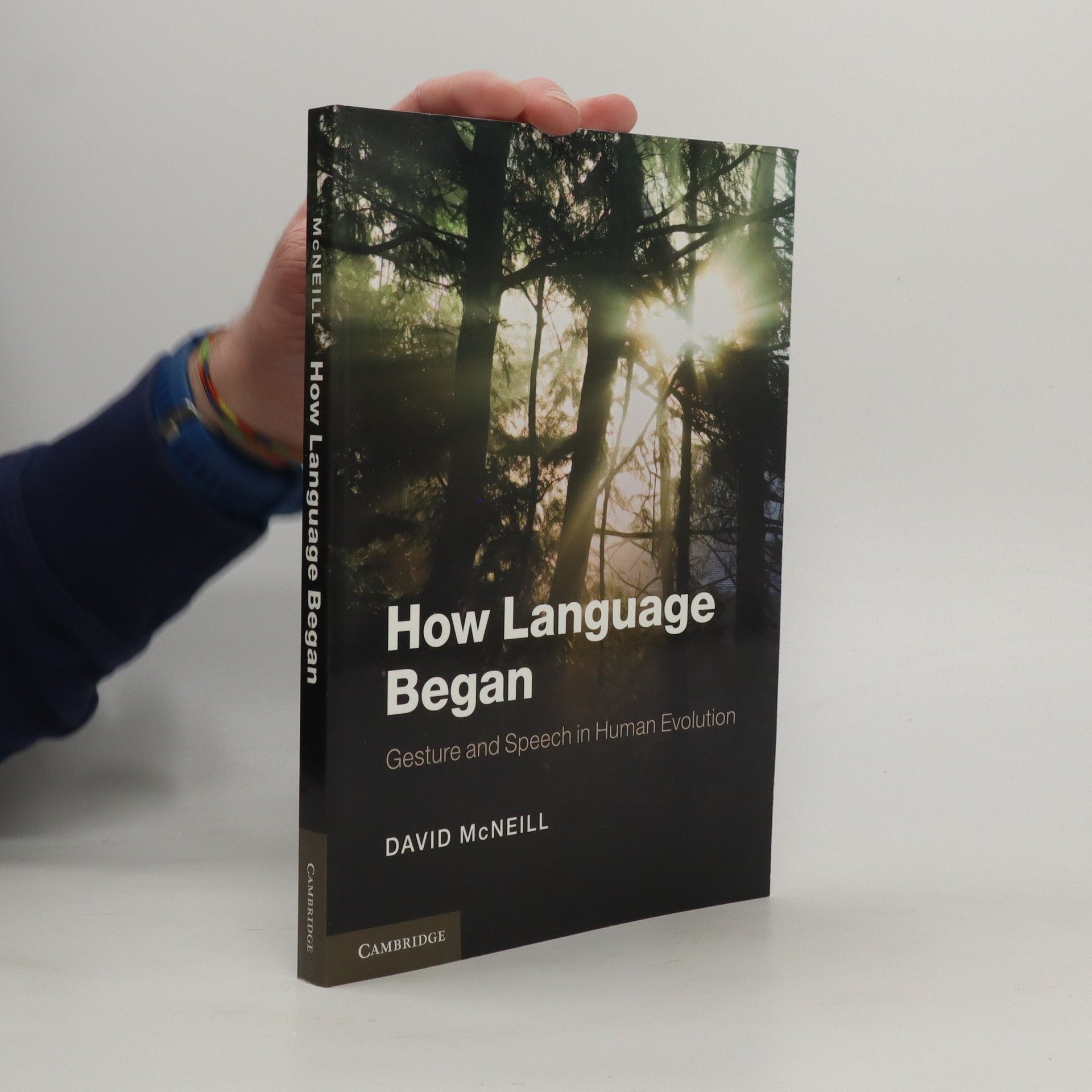The book explores the intricate relationship between speech and thought, presenting a fresh perspective that challenges modern linguistic and psycholinguistic theories. Building on Vygotsky's foundational ideas, it emphasizes the organization of action, positing that speech emerges from sensory-motor representations that intertwine meaning and action. This work aims to provide a deeper understanding of how language and cognitive processes are interconnected.
David McNeill Pořadí knih
David McNeill je americký psycholog a spisovatel, jehož práce se zaměřuje na vědecký výzkum psycholingvistiky. Zkoumá zejména vztah mezi jazykem a myšlením a gesty, která doprovázejí projev. Jeho bádání osvětluje složité propojení mezi verbální komunikací a kognitivními procesy.





- 2013
- 2012
Human language is not the same as human speech. We use gestures and signs to communicate alongside, or instead of, speaking. Yet gestures and speech are processed in the same areas of the human brain, and the study of how both have evolved is central to research on the origins of human communication. Written by one of the pioneers of the field, this is the first book to explain how speech and gesture evolved together into a system that all humans possess. Nearly all theorizing about the origins of language either ignores gesture, views it as an add-on or supposes that language began in gesture and was later replaced by speech. David McNeill challenges the popular 'gesture-first' theory that language first emerged in a gesture-only form and proposes a groundbreaking theory of the evolution of language which explains how speech and gesture became unified.
- 1992
Hand and Mind. What Gestures Reveal about Thought
- 423 stránek
- 15 hodin čtení
Using data from more than ten years of research, David McNeill shows that gestures do not simply form a part of what is said and meant but have an impact on thought itself. Hand and Mind persuasively argues that because gestures directly transfer mental images to visible forms, conveying ideas that language cannot always express, we must examine language and gesture together to unveil the operations of the mind.
- 1975